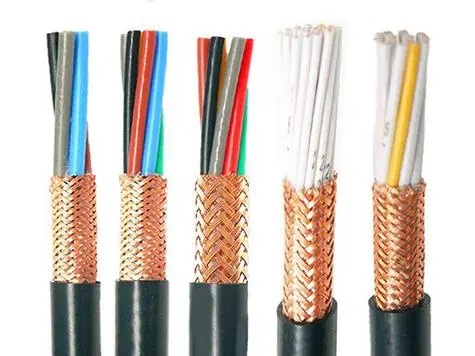Introduction
In today's world, where safety and environmental consciousness are paramount concerns, the use of halogen-free control cables has gained significant attention and importance. These cables offer a safer and more sustainable alternative to traditional cables that contain halogen compounds. In this comprehensive guide, we will explore the benefits, characteristics, applications, and considerations of halogen-free control cables in detail.
Chapter 1: Understanding Halogen-Free Control Cables
Halogen-free control cables are cables that do not contain halogen compounds such as fluorine, chlorine, bromine, or iodine in their construction. Halogens are commonly used in traditional cable insulation and jacketing materials because they provide flame-retardant properties. However, when Power Cable For Sale -containing cables are exposed to fire or high temperatures, they can release toxic gases and smoke, posing serious health hazards to humans and the environment.
Halogen-free control cables are designed to address these safety concerns by using alternative materials that do not contain halogens. These cables are constructed using materials such as polyethylene (PE), polypropylene (PP), cross-linked polyethylene (XLPE), and thermoplastic elastomers (TPE), which offer flame-retardant properties without the use of halogens.
Chapter 2: Benefits of Halogen-Free Control Cables
1. Improved Safety: One of the primary benefits of halogen-free control cables is enhanced safety. In the event of a fire, halogen-free cables do not emit toxic gases or corrosive smoke, making them safer for occupants in buildings and industrial facilities.
2. Reduced Environmental Impact: Halogen-free control cables are more environmentally friendly than traditional halogen-containing cables. By eliminating halogens from their construction, these cables reduce the release of harmful chemicals into the environment during manufacturing, use, and disposal.
3. Compliance with Regulations: Many countries and regions have stringent regulations regarding the use of halogens in electrical cables. Using halogen-free control cables ensures compliance with these regulations and helps companies avoid fines and penalties.
4. Improved Performance: Halogen-free control cables offer excellent electrical and mechanical properties, making them suitable for a wide range of applications. These cables are durable, flexible, and resistant to oil, chemicals, and abrasion, ensuring reliable performance in various environments.
Chapter 3: Characteristics of Halogen-Free Control Cables
1. Flame Retardancy: Halogen-free control cables are designed to meet strict flame-retardant standards without the use of halogens. These cables are capable of self-extinguishing in the event of a fire, reducing the spread of flames and minimizing smoke emissions.
2. Low Smoke Emission: Halogen-free control cables produce minimal smoke when exposed to fire, improving visibility and allowing for safe evacuation in emergency situations.
3. Low Toxicity: Unlike traditional halogen-containing cables, halogen-free control cables do not release toxic gases such as hydrogen chloride or hydrogen fluoride when burned. This characteristic makes them safer for human health and the environment.
4. Temperature Resistance: Halogen-free control cables exhibit excellent temperature resistance, allowing them to operate effectively in a wide range of temperatures, from -40°C to 90°C or higher, depending on the cable construction.
Chapter 4: Applications of Halogen-Free Control Cables
Halogen-free control cables are suitable for a variety of applications across different industries. Some common applications include:
1. Building Automation: Halogen-free control cables are used in building automation systems to connect sensors, actuators, and control devices. These cables ensure reliable data transmission and control signals in smart buildings and energy-efficient installations.
2. Industrial Machinery: Halogen-free control cables are ideal for use in industrial machinery and equipment where safety and reliability are crucial. These cables provide secure connections for motors, sensors, and control systems in manufacturing plants and production facilities.
3. Renewable Energy: Halogen-free control cables play a vital role in renewable energy projects such as solar power plants and wind farms. These cables enable the efficient transmission of power and control signals in harsh environmental conditions.
4. Transportation: Halogen-free control cables are used in the transportation sector for applications such as railway signaling, automotive control systems, and marine vessels. These cables are resistant to vibration, oil, and extreme temperatures, making them suitable for rugged transportation environments.
Chapter 5: Considerations for Choosing Halogen-Free Control Cables
When selecting halogen-free control cables for a specific application, several factors should be considered:

1. Temperature Rating: Ensure that the cable's temperature rating meets the requirements of the application to prevent overheating and ensure long-term reliability.
2. Voltage Rating: Select a cable with an appropriate voltage rating to safely transmit power and control signals without the risk of electrical failures.
3. Environmental Conditions: Consider the environmental conditions in which the cable will be installed, such as exposure to sunlight, moisture, chemicals, and mechanical stress. Choose a cable that is designed to withstand these conditions.
4. Compliance: Verify that the halogen-free control cable complies with relevant industry standards and regulations to ensure safety and reliability.
Conclusion
Halogen-free control cables offer a safe, sustainable, and reliable solution for a wide range of applications across various industries. By choosing these cables, companies can enhance safety, reduce environmental impact, and ensure compliance with regulations. Understanding the benefits, characteristics, applications, and considerations of halogen-free control cables is essential for making informed decisions and selecting the right cable for specific requirements. Embracing halogen-free control cables is a step towards a safer and more sustainable future in the field of electrical installations and control systems.
